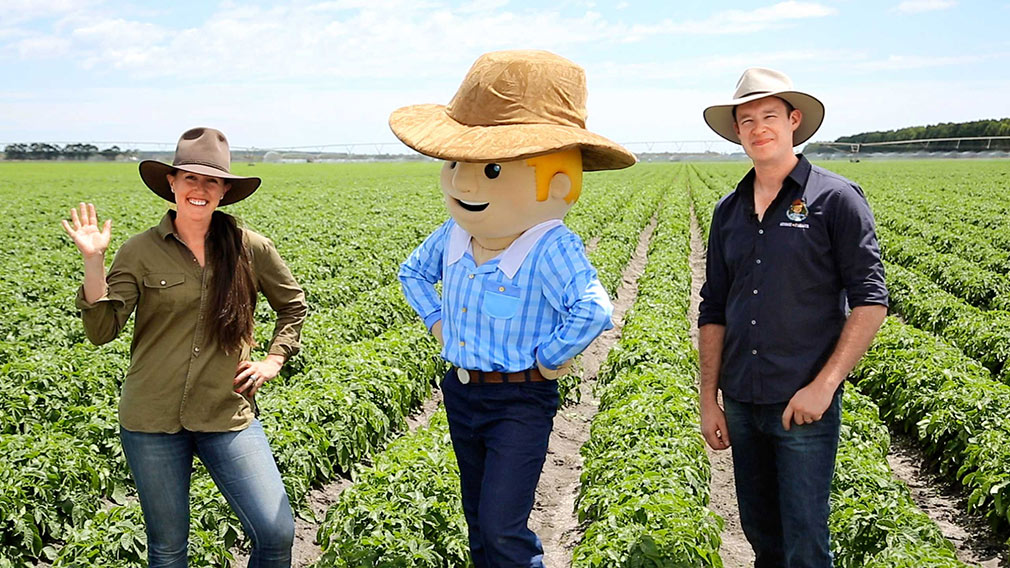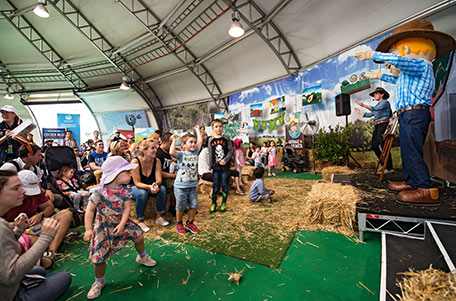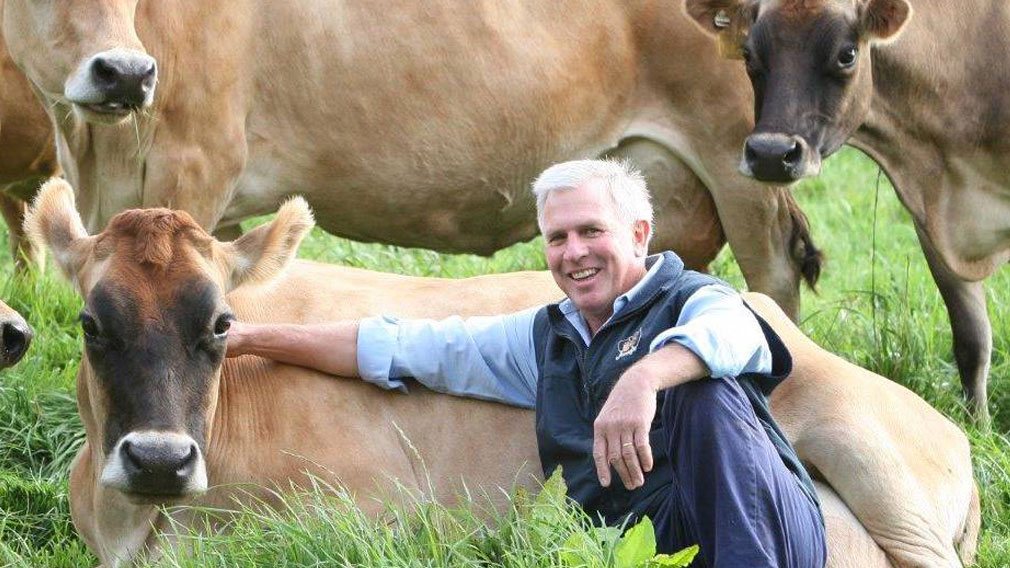Inside ‘George the Farmer’s’ next crop

Author Simone Kain, left, and her business partner, illustrator Ben Hood, right, with their creation George the Farmer. (Supplied)
When Simone Kain was expecting twins, she wanted to keep her farming-mad, two-and-a-half-year-old son occupied, so she began looking for stories.
Little did she know that six years later this would lead into a series of books featuring George the Farmer, who would become a national sensation and permanent fixture in school rooms around the country.
“I was looking for an app or a book to keep my son George entertained when the twins came along, but all I could find were English or American apps or stories,” says Kain. “They all referred to ‘barns’ instead of ‘sheds’, ‘fields’ instead of ‘paddocks’ and ‘fall’ instead of ‘autumn’.”
At the same time, Kain and her business partner, Ben Hood, were looking at ways to build a second stream of income for their creative agency, Hello Friday – in particular, app development.
“I thought there would be an opportunity for us to create a character that would be inspirational for farming kids across Australia,” Kain says.
The idea of George the Farmer and his agronomist wife, Dr Ruby, was born – a story that Kain would write and Hood would illustrate.
George the Farmer tackles the day-to-day activities of Australian life along with his talented agronomist wife, Dr Ruby, and their twins, Lucy and Jack. “The characters are all based on family friends or family members. We’ve taken personality traits and names from friends and family,” Kain says.
The adventures mirror the real challenges faced by farmers on a day-to-day basis, from not realising the seeder has run out of seeds to discovering what’s causing the cows to have a pooey problem. George has also been developed into a giant mascot, who appears at rural events and also tours schools, where he performs songs and dances.
“Instead of self-publishing the story, we thought we’d launch it as an interactive story app and then we could show it to prospective clients and get more apps as well.”
Since then, four stories have been launched, but there has been a demand for the printed book.

Farmer George in action. (Supplied)
“After launching the app, we started getting requests for physical copies of the book, which really surprised us because we thought we were being cutting-edge by producing apps.”
The stories about an inspirational character who resonates with farm kids across the country then took an unexpected turn: they became an important education tool.
“It wasn’t until I started researching for the first story that I realised there was a lack of education for kids about where their food and fibre comes from,” Kain says.
At this time – in 2012 – the Primary Industries Education Foundation had commissioned a survey and unearthed some pretty staggering statistics. Almost one-third of children thought yoghurt came from a plant, 75 per cent believed cotton came from an animal and almost 50 per cent couldn’t identify that everyday lunchbox items such as a banana, bread or piece of cheese originated from a farm.
These figures are not isolated to Australia, but reflect a worldwide trend, Kain says. “We thought that not only do these books have to be fun, we have to put an educational spin on them.”
As a result, the George the Farmer books are now aligned with the national school curriculum, with a free educators’ guide, and cross over into food and fibre education. They also look at innovative careers in primary industries.
“A lot of kids when they’re growing up know the standard careers – doctor, lawyer, dentist, hairdresser, perhaps farmer – but the books help them to understand what other careers are available in primary industries.”
Their efforts have not gone unnoticed. Last year, Kain was announced as the National Runner-up in the 2017 AgriFutures™ Rural Women’s Award, a program which acknowledges and supports the essential role women play in rural and regional industries, businesses and communities.
“It was such a fantastic honour,” she says. “The most important thing I’ll get out of it is the promotion and awareness of what we do.”
Kain was granted a $10,000 state bursary and a $5000 national bursary, which she is putting towards developing three educational resources through the Primary Industries Educational Foundation. The resources will be ready for the second term of school.
The campaign to raise awareness and to educate does not only target children. Kain has developed a strong social media outlet that provides simple, easy-to-understand videos, information snippets and news stories to show the importance of agriculture.
“So if we’re harvesting broad beans, we’ll take little clips of my husband or my dad grading broad beans,” she says.
“If people don’t understand where food comes from, how can they form an appreciation of farming and how lucky we are to have access to the beautiful clean, green food that is produced here?”
This is an edited version of a story that first appeared in the Autumn edition of Produce Magazine by Westpac Agribusiness.

